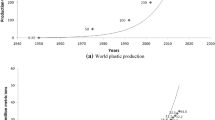Abstract
The U.S. Environmental Protection Agency (EPA) recommends the use of the one-sided 95% upper confidence limit of the arithmetic mean based on either a normal or lognormal distribution for the contaminant (or exposure point) concentration term in the Superfund risk assessment process. When the data are not normal or lognormal this recommended approach may overestimate the exposure point concentration (EPC) and may lead to unecessary cleanup at a hazardous waste site. The EPA concentration term only seems to perform like alternative EPC methods when the data are well fit by a lognormal distribution. Several alternative methods for calculating the EPC are investigated and compared using soil data collected from three hazardous waste sites in Montana, Utah, and Colorado. For data sets that are well fit by a lognormal distribution, values for the Chebychev inequality or the EPA concentration term may be appropriate EPCs. For data sets where the soil concentration data are well fit by gamma distributions, Wong's method may be used for calculating EPCs. The studentized bootstrap-t and Hall's bootstrap-t transformation are recommended for EPC calculation when all distribution fits are poor. If a data set is well fit by a distribution, parametric bootstrap may provide a suitable EPC.
Similar content being viewed by others
REFERENCES
EPA, Risk Assessment Guidance for Superfund Volume I: Human Health Evaluation Manual(Office of Emergency and Remedial Response, U.S. Environmental Protection Agency, Washington, DC, 1989).
EPA, Supplemental Guidance to RAGS: Calculating the Concentration Term (Office of Solid Waste and Emergency Response, U.S. Environmental Protection Agency, Washington, DC, 1992).
EPA, Statistical Analysis of Ground-Water Monitoring Data at RCRA Facilities Draft Addendum to Interim Final Guidance(Office of Solid Waste Permits and State Programs Division, U.S. Environmental Protection Agency, Washington, DC, 1992).
A. K. Singh, A. Singh, and M. Engelhardt, EPA Technology Support Center Issue, The Lognormal Distribution in Environmental Applications(Office of Emergency and Remedial Response Office of Research and Development, U.S. Environmental Protection Agency, Washington, DC, 1997).
A. M. Law and W. D. Kelton, Simulation Modeling and Analysis,2nd ed. (McGraw-Hill, New York, 1991).
C. D. Sinclair and B. D. Spurr, ''Approximations to the Distribution Function of the Anderson-Darling Test Statistic'', J.Am.Stat.Assoc.831190–1191 (1988).
C. E. Land, ''Confidence Intervals for Linear Functions of the Normal Mean and Variance,'' in Selected Tables in Mathematical Statistics,Vol. III (American Mathematical Society, Providence, RI, 1975).
R. O. Gilbert, Statistical Methods for Environmental Pollution Monitoring(Van Nostrand Reinhold, New York, 1987).
A. Wong, ''A Note on Inference for the Mean Parameter of the Gamma Distribution,'' Stat.Prob.Lett.1761–66 (1993).
B. F. J. Manly, Randomization, Bootstrap and Monte Carlo Methods in Biology,2nd ed. (Chapman & Hall, London, 1997).
L. C. Hamilton, Regression with Graphics.A Second Course in Applied Statistics.(Duxbury Press, Belmont, CA, 1992).
P. Hall, ''On the Removal of Skewness by Transformation,'' J.R.Stat.Soc.B 54221–228 (1992).
Kleinfelder, Inc., Health Risk Assessment Pallas Yard Murray, Utah Final Draft(December 22, 1997).
R. Bornschein, The Butte-Silver Bow Environmental Health Lead Study Final Report(Butte-Silver Bow Department of Health and Department of Environmental Health, University of Cincinnati, Cincinnati, OH, 1992).
Bureau of Reclamation, Geologic Site Investigations for Conceptual Evaluation of Surface Waste Cleanup, Wellington-Oro Mine Complex, Breckenridge, Colorado(U.S. Bureau of Reclamation, Technical Service Center, Denver, CO, 1997).
Author information
Authors and Affiliations
Rights and permissions
About this article
Cite this article
Schulz, T.W., Griffin, S. Estimating Risk Assessment Exposure Point Concentrations when the Data Are Not Normal or Lognormal. Risk Anal 19, 577–584 (1999). https://doi.org/10.1023/A:1007021217080
Issue Date:
DOI: https://doi.org/10.1023/A:1007021217080




